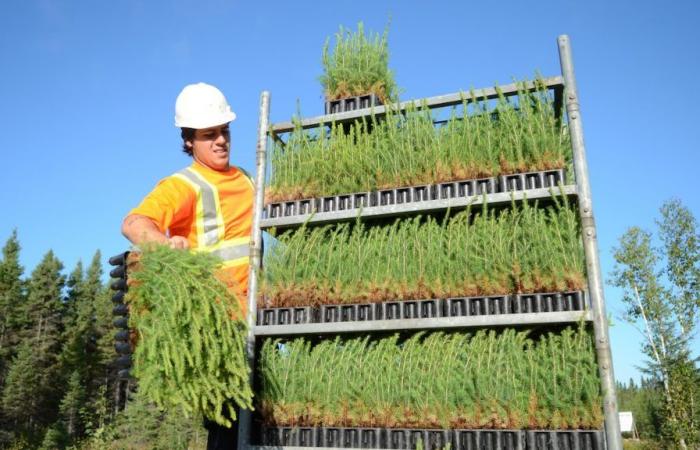The Minister of Natural Resources and Forests, Maïté Blanchette-Vézina, is beginning the reform of the forestry regime, and businesses on the Côte-Nord hope to see measures that are more adapted to regional realities.
The report, detailed by the minister on Friday, is the result of consultations on the future of the forest in which the Boisaco sawmill in Sacré-Cœur and the Office des producteurs de plants forestiers du Québec (OPPFQ) took part.
Boisaco cooperative president Steeve St-Gelais welcomes Minister Blanchette-Vézina’s initiative. He expects the reform to facilitate administrative processes to better achieve objectives.
We very much hope to get away from the administrative burden that characterizes the current system, to move towards something truly more efficient and adapted.
he says.
Open in full screen mode
Steeve St-Gelais is president of Boisaco, a forestry company that generates 600 jobs in Sacré-Coeur, on the Côte-Nord.
Photo : Radio-Canada
With this new regime, theOPPFQwhich includes the Forestville Forestry Centre, hopes to participate more in forest management.
We don’t have any discussions with the rest of the network. Everything is routed through the ministry and unfortunately, we have a hard time giving our opinion to improve things.
criticizes the president of the OPPFQ, Stéphane Boucher.
Open in full screen mode
Stéphane Boucher is president of the Office of Forest Plant Producers of Quebec. He is also president of the Boucher Nursery in Saint-Ambroise. (Archive photo)
Photo : Radio-Canada / Myriam Gauthier
According to him, more direct communication between nurseries and other industry players would allow for better management of the calendar and more precise anticipation of needs, with a view to better meeting the needs of reforestation companies.
Climate change is affecting forest management
The plan to modernize the forest regime should help address climate change, forest fires, as well as diseases and insects that ravage trees intended for harvesting.
Open in full screen mode
White spruce, black spruce and jack pine are the three main products of the Forestville Forestry Centre. (Archive photo)
Photo : Radio-Canada / Benoit Jobin
To do this, the report on the future of forests proposes the diversification of tree species planted after a felling or forest fire, in particular by introducing hardwood species.
This is not possible at this time. The Sustainable Forest Development Act requires that burned or cut areas be reforested with species present in the territory.
the minister said.
For now, in the boreal forest, the species produced and planted are essentially jack pine, white spruce and black spruce. Stéphane Boucher indicates that forestry companies are ready to produce hardwoods, such as aspen, birch and quaking aspen, to help counter insect invasions or the spread of fires.
Nurseries can adapt to new demands from the ministry. We need to discuss, make a game plan. I expect this phase this fall.
The Minister of Natural Resources and Forestry, Maïté Blanchette-Vézina, would like to complete this project quickly. However, no timeline has been set.
According to information from Catherine Gosselin






